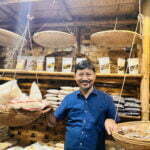Suman Ghimire
Isn’t it so easy to call someone a prostitute or to denote a girl or a woman by this particular name? Let us go to the other side – does she really choose to be a prostitute or is she forced into it?
Going to the roots, it has three sides unlike a coin which has only two. None of these girls come from a family that could afford a good one time meal, the other thing being illiteracy and she – being a daughter. There is a hue and cry if a daughter is born, so her dad tries again, however unfortunate enough, a third try and boom –a son. Five in a family and being a farmer earning low wages it is very difficult to run a family. After all the feeling of happiness for finally having a son has not filled up the empty spaces yet, thoughts about the dowry he needs to pay for her marriage makes him anxious. Then there comes a ray of hope – an unfamiliar man who is ready to help the poor & illiterate farmer with money. He sells them at 200$ each, enough to make him happy. The girls have no idea where they are being taken to but they are happy because father was not there to scold and hate them.
Tina (name changed) was 14, she says when she was sold into slavery, she was beaten and forced into prostitution. “When I arrived at the brothel, I refused to do what they told me and they beat me and starved me for 10 days,” says the soft-spoken girl, after being rescued. She was just a kid when she found herself along with thousands of other girls who are beaten, locked in tiny cages or hidden in attic. “Some are forced to have sex with as many as twenty men a day under the watchful eyes of madams and pimps” reveals Tina with utter despair.
“They are not given enough to eat. There are no beds. They have to sleep on the floor. Sometimes they are raped,” says Ruchira Gupta, a social worker and documentary filmmaker who spent months investigating the horrors of Bombays’ brothels for her film ‘the selling of humans’.
Though prostitutes can be seen openly soliciting on the streets in the red-light areas, police often pay no heed. Asked what role his department plays in rescuing these girls, the police official says, “prostitution is said to be the oldest profession in this world . The society has been accepting it, demanding it and then encouraging it .We are not social workers, we are law enforcers” .
And yet, it is one civilian- and not the police, with the help of a news channel (hidden cameras) has taken on a personal and very dangerous crusade to rescue abducted girls. He says he has rescued more than 180 underage girls.
So we see, it is an intersection of poverty and sexism. It is very often the parents who send or sell their children away, thinking they may be or being taken to work somewhere. But most unfortunately most of them land up in the brothels.
According to a report by the ministry for women and child development, India has nearly 2.5 million prostitutes in nearly 300000 brothels in 1110 red light areas across the country. 90% or more is estimated as in-country and 5 to 10% from cross-border trafficking, reported mainly from Bangladesh and Nepal.
India has a fairly wide framework of laws enacted by the parliament as well as some state legislatures, apart from the constitutional provisions. Poor implementation of the laws along with low conviction rates, and serious corruption adds to the problem.
Some efforts from social activists, civilians and international support towards eradicating this modern slavery, have started showing some impact.







